It is no secret why tourists from all over the world want to visit the Scottish Highlands, with its beautiful coastline, towering mountains and enchanting islands, but it can be difficult to know where to begin when planning a route – there seems to be so much to see, and so many routes to choose from!
This route intends to have you begin at one of the major cities (Edinburgh or Glasgow) and come back down to them at the end so that it can be easily worked in with flights and other travel arrangements, however, the routes are simple and can easily be changed if there are parts you wish to add or change.
This is only one of many routes that can be taken through the Highlands, but it aims to give a great seven-day introduction to Scotland’s northern lands!
Disclaimer: Hi! this post may contain affiliate links which will take you to online retailers that sell products and services. If you click on one and buy something, I may earn a commission, see my Affiliate Disclosure for more details.
Day 1 – Drive to Oban
Drive: From Glasgow 2hrs 24 mins or Edinburgh 2 hrs 58 mins

The first day of your trip to the Highlands sees you driving from one of the major cities to the town of Oban.
Not only will the motorway routes from Scotland’s two major cities bring you to Oban faster, but they will provide you with a beautiful scenic drive along the way as well.
On your way from the central belt to the wondrous highlands, you will be taken through Loch Lomond and the Trossachs National Park and have the opportunity to gaze over some of the best scenery the country has to offer.
Loch Lomond is the largest Loch that Britain has to offer, making your first drive one of the most impressive ones by far.
Around 40 minutes into your drive you will reach the glorious Loch, so while you’re stopping to stretch your legs, why not enjoy some award-winning fish and chips by the Loch-side while you take in the beauty that surrounds you?
The Lomond fish bar is a popular stop for locals and tourists alike and is the perfect way to enjoy a favourite of Scots cuisine.
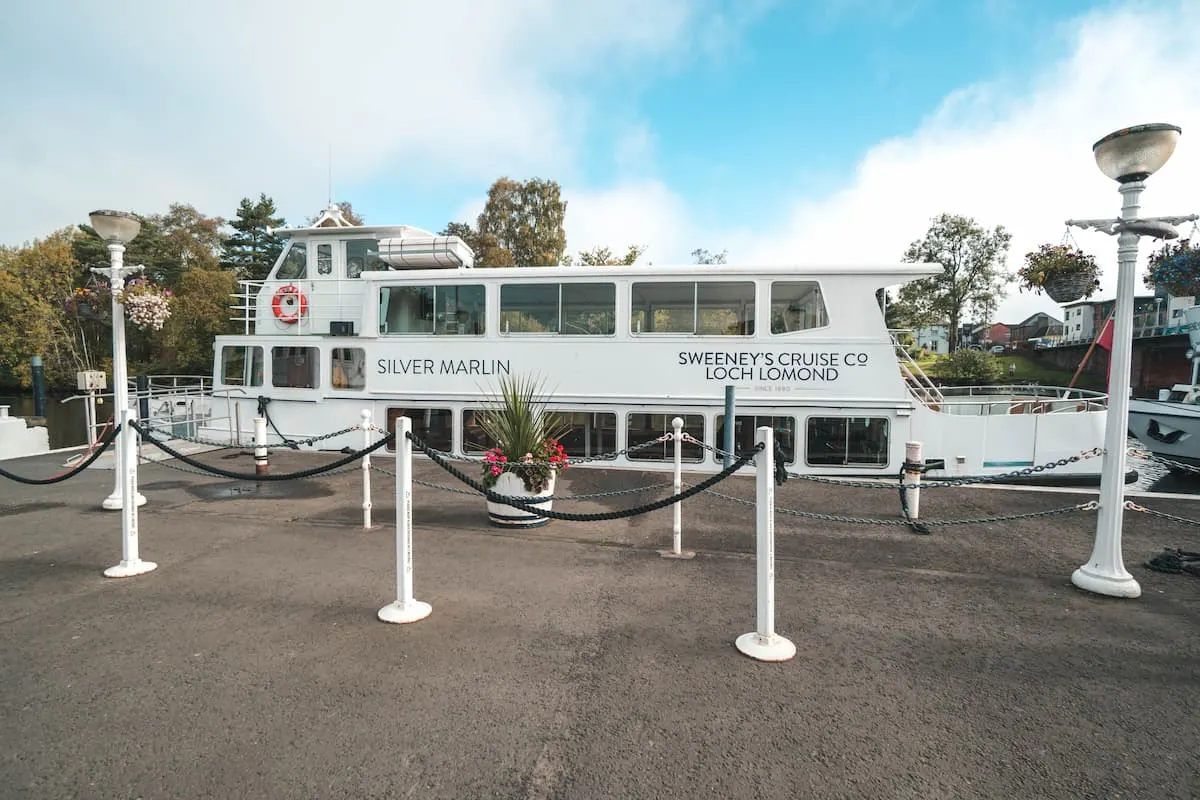
To get more views of the Loch you can take a cruise like Sweeney’s. They have a few options but the one-hour circular tour of Loch Lomond’s South basin which is a good balance between seeing it and time.
You will learn the history in the area, what happened between the clans, how Robert the Bruce sheltered as a fugitive before he was to become King of Scotland and much more.
The rest of the drive will take you through some equally picturesque villages and towns, such as Luss or Dalmally, which prove to be some of the most perfect photo-taking spots along the Lochside and before you know it, you will have arrived in the tranquil and beautiful town of Oban.
Directly translated from Gaelic, Oban’s name means ‘little bay’, but when you arrive here you will quickly realise that it is so much more than that.
The small town, inhabiting only around 8,500 people, is surrounded by seaside as well as countryside, making it a well-renowned holiday destination among Scottish people.
If you are partaking in this particular whistle-stop tour of the Highlands, then it is certainly recommended that you stay near the centre of the small harbour town in order to make the most out of the attractions that it has to offer. I personally stayed at the Randal Apartments which is central to the town and has free street parking from 6pm until 9am.
Once you are in the centre of the town it becomes very easy to travel to most places by foot and explore the galleries, independent shops, museum and even the local distillery.
Of course, the key attraction in Oban is the sea-front which brings in masses of tourists every single year, and for good reason too! As you wander along the seafront you can have a look at the wonderful ruins of Dunollie Castle and check out the sensational sunsets on the beach.
If you’re looking to try some Scottish Whisky then there is a local distillery right in town. Jim our tasting guide was absolutely hilarious and the dram was pretty good too!
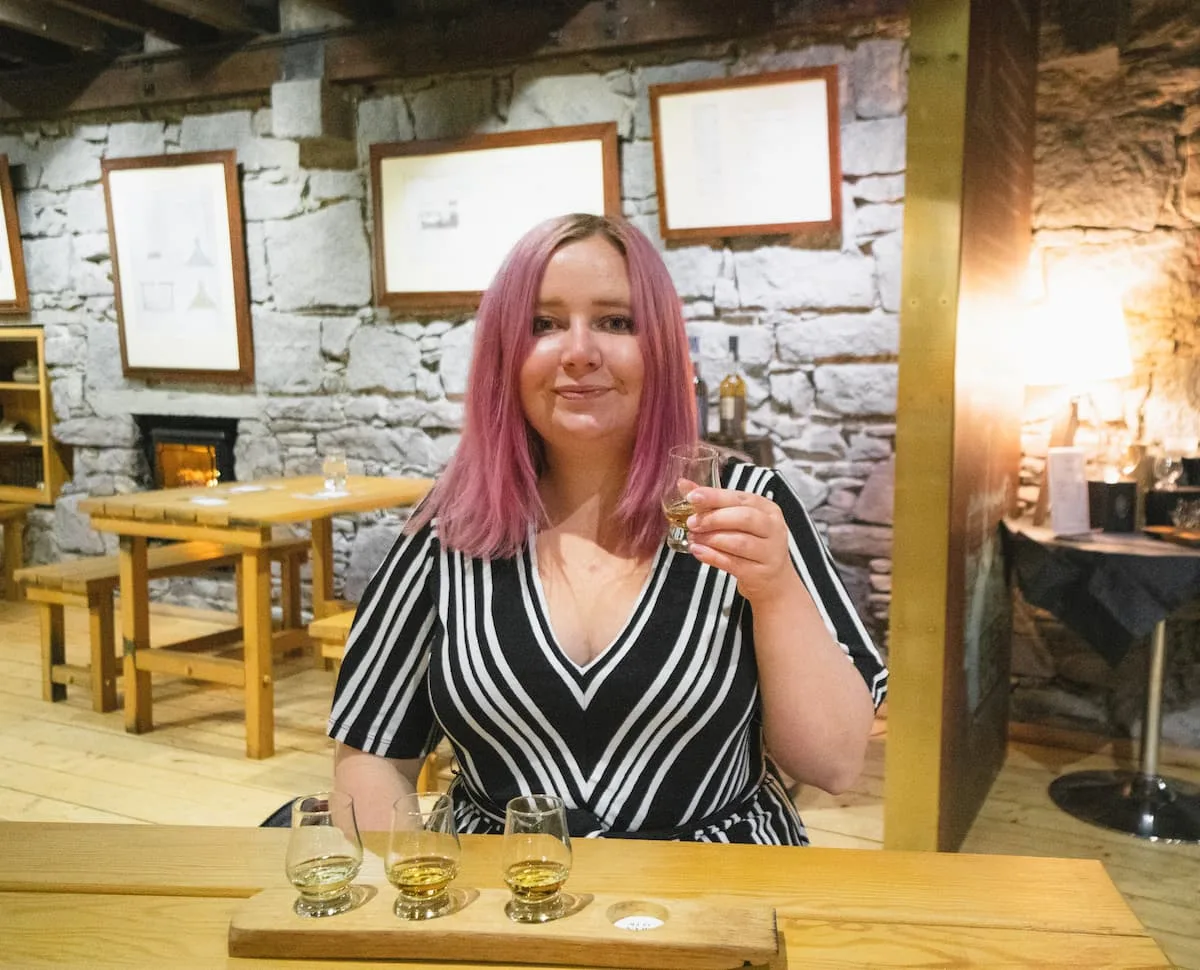
For views make your way McCaig’s Tower at sunset.
At the end of the day, why not enjoy a cosy local meal at one of the pubs or restaurants around the harbour to get a real feel for the atmosphere of the town.
The Oban Fish & Chip Shop was voted by Rick Steve’s to be one of the best fish and chips he’s ever had. They offer veggie options like haggis for us that don’t eat meat.
Cuan Mor was another place we dined at, with good food options and a good range of drinks to choose from. They don’t take bookings, it’s the first-come-first-served basis.
Optional Extra: Isle of Mull or Staffa
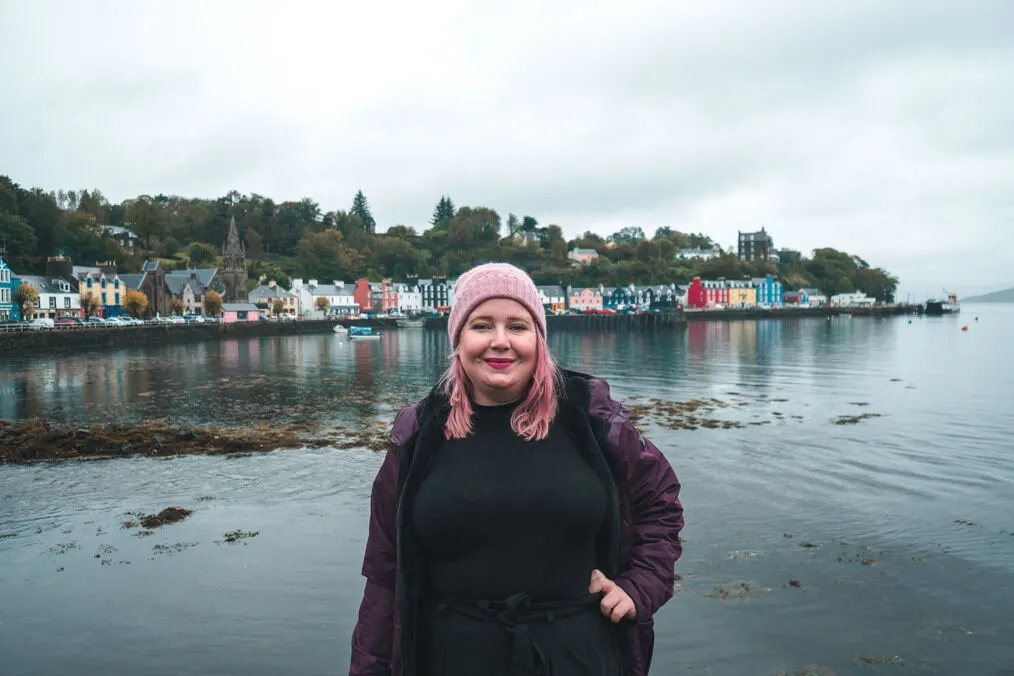
Depending on how much time you have you could sneak in a day trip or a night in the Isle of Mull. One of the things I really wanted to do whilst I was Oban was going on a wildlife cruise and high on my list is to see puffins (sadly it was the wrong time of the year).
To name just a couple of examples of great tours near Oban, West Coast Tours and Staffa Tours both run tours of all three of these islands, making the organisation of this part of the trip much easier.
Another benefit of choosing an organised tour is that you can be sure not to miss any of the best parts of the islands on your travels, such as the rugged landscapes of Mull, with its lengthy coastline and interesting wildlife and sealife, such as puffins, whales, dolphins, sea eagles and basking sharks.
Whilst I didn’t take a tour, instead opting for driving around the island, I saw an Eagle! It was incredible seeing one just sitting on a pole looking over the seaside.
Nor would it be wise to skip on a trip to the peaceful small Isle of Iona, with its tiny population of around 130 people, which is described by all who visit as a truly enchanting trip.
Walk among architecture which carries huge historical significance, such as the restored medieval abbey (which still holds services!) and St Oran’s chapel alongside Reilig Odhram, which is said to be the burial place of forty-eight Scottish kings, even the world-famous Macbeth!
And then, you certainly would not want to miss out on a trip to the famous Fingal’s Cave on the Isle of Staffa, which hosts some of the most wondrous geological features in Scotland – which is really saying something!
If you’ve heard of Giants Causeway in Northern Ireland then you might have heard the tale about the two giants. The legend has it that Fionn (the Irish Giant) was challenged to a fight by the Scottish giant Benandonner. Fionn accepted and built the causeway across the North Channel.
There are two endings to the tale, one being that Fionn hides from Benadonner due to his size and the other that he defeats the Scottish Giant. As we are in Scotland we will side with the fact the Irish giant was too scared.
Around the cave one can expect to find the stunning, naturally formed basalt structures that surround it, forming towering columns around the mouth of the cave making it appear like a highly thought-out architectural structure.
The great thing about these islands is that they are small and easy to travel around in only one day, while still being able to see all of the incredible sights that are available on them. All in all, this is a truly worthwhile detour to make on your trip!
Day 2 – Oban to Glencoe
Drive: 53 minutes
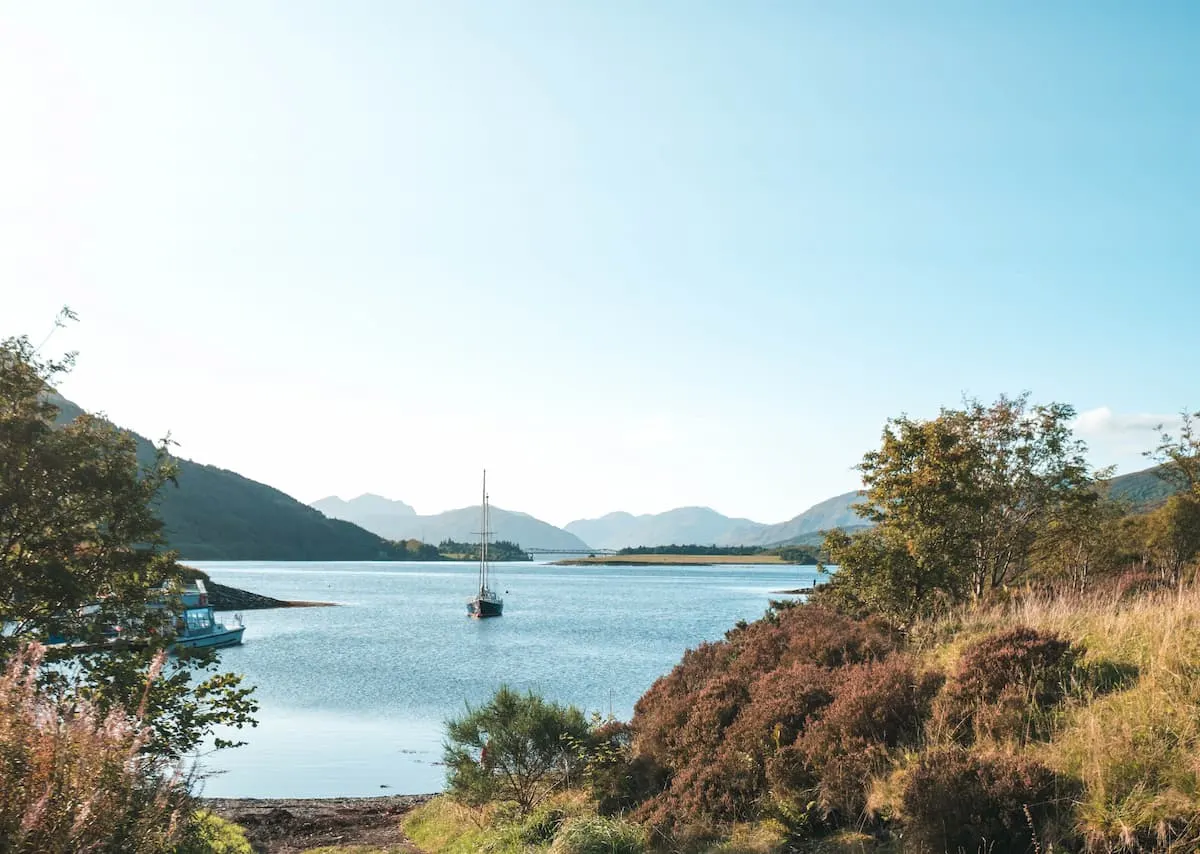
The next stop on the trip is Glencoe, which is a short drive from Oban.
Glen Coe, the most famous and historic glen Scotland’s land has to offer! The impressive-looking glen (narrow valley, to those who aren’t Scots) was formed naturally hundreds of years ago by volcanic activity and glacier movement.
The village of Glen Coe itself is located between Loch Leven and the mouth of the aforementioned Glen, which means it’s the perfect location to be in if you are looking for a base to explore the Lochaber area.
As you drive through the Glen you will be shown the volcano itself and can explore the very birth of the glen, right back to when it was first formed all those years ago.
Any Harry Potter fans travelling with you? Perfect! You can visit some of the locations where parts of the actual movies were shot.
The third film, The Prisoner of Azkaban, was filmed in three different locations around Glencoe; the mountainsides can be recognised by those with a keen eye as the backdrop of Hagrid’s hut, and you can also find the Hogwarts bridge and gatehouse in this magical location.
A whole day can be spent exploring these locations for sure, but there is so much else to do as well!
About an hours drive from Glencoe is one of the best opportunities for photography that your trip will offer, not least of all due to the fact that you can find the Glenfinnan Viaduct with just a small detour, and relive the iconic Harry Potter moment itself.
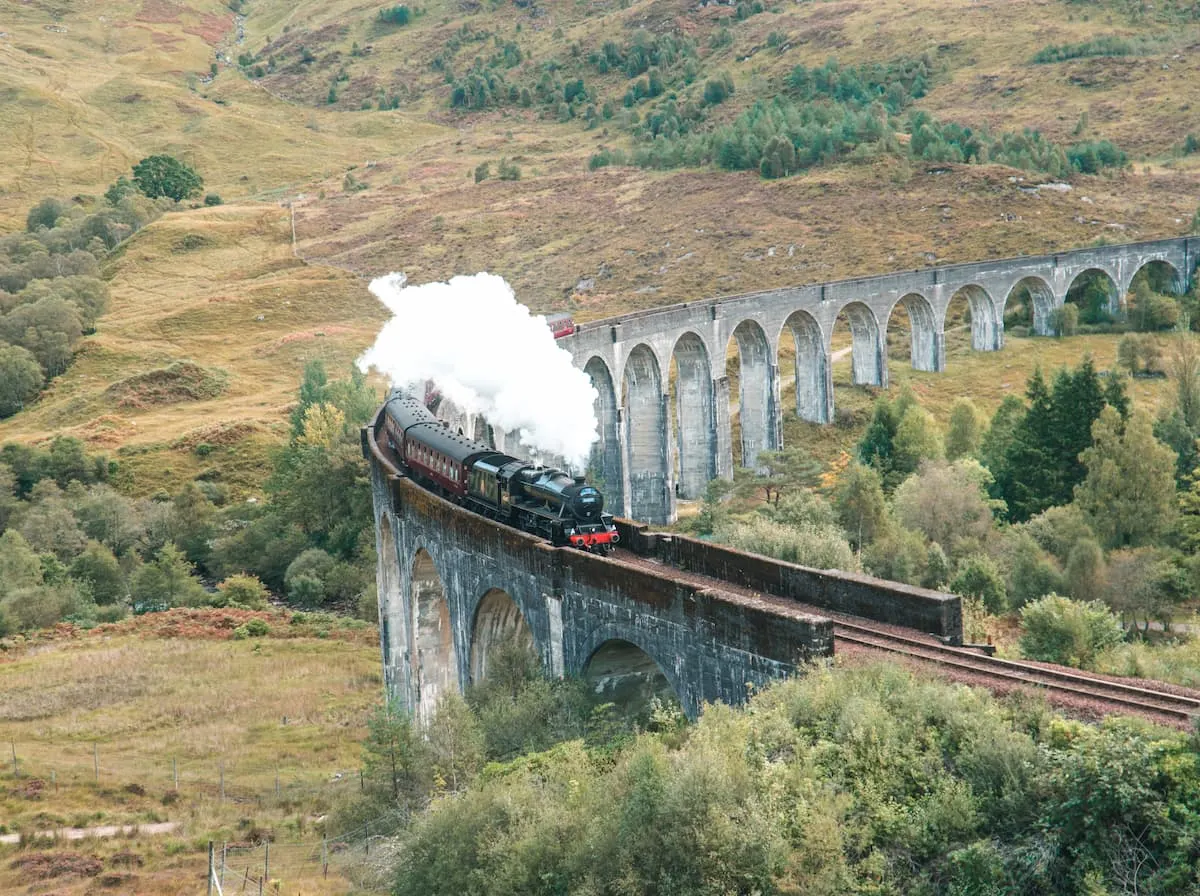
For the classic photo of the train crossing the Glenfinnan Viaduct, you will need to time it and depending on the time of the year there will be either one or two trains running. For more information check the Jackabite train timetable.
The train will roughly arrive 45 minutes after departing Fort William over the Viaduct. Parking does fill up quickly and the good viewpoints are taken about an hour before.
In terms of walking, Glencoe offers beautiful scenic walks for all levels of hikers; there are plenty of routes for the experienced hillwalker, with difficulty that could still pose a challenging but highly enjoyable hike.
There are also shorter and far easier walks that could be suitable for families travelling with children, or simply for those who want to take it slightly easier!
One of the easier walking routes, is the Ballachulish Slate Quarries and Loch Leven route. This walk is only about two kilometres long and takes roughly one hour to complete at a moderate pace, but still offers stunning scenery at a difficulty suitable to even the least experienced hill walker!
For those who desire more of a challenge, there are some excellent options such as the Kinlochleven Blackwater Reservoir, consisting of around seventeen kilometres and taking around six hours to complete, or the Pap of Glencoe which is a similar length.
Whatever it is you hope to get from walking in Glencoe, it can happily deliver!
Rest in one of Glencoe’s beautiful lodges or inns, which appear to be straight out of a fairytale, and get a good night sleep ahead of a day of exploring the gorgeous town tomorrow!
Day 3 – Glen Coe to Skye
Drive: 2 hours and 15 minutes (to the bridge crossing) and then a day around the Isle of Skye. P.s. leave as early as you can to make the most of your time on the Isle of Skye.
The next destination, which will be the stunning Isle of Skye, around a three and a half-hour drive from Glen Coe but you will certainly be rewarded for it!
Leave as early as you can as you will want to make sure you have as much time as possible on the Isle of Skye.
I recommended that you stay two nights rather than one – this will also give you some much-needed rest time after the long drive!
There are hundreds of things to do on Skye and you will only be able to choose a few of them, so this time it really depends on what it is that you are looking for!
Eilean Donan Castle
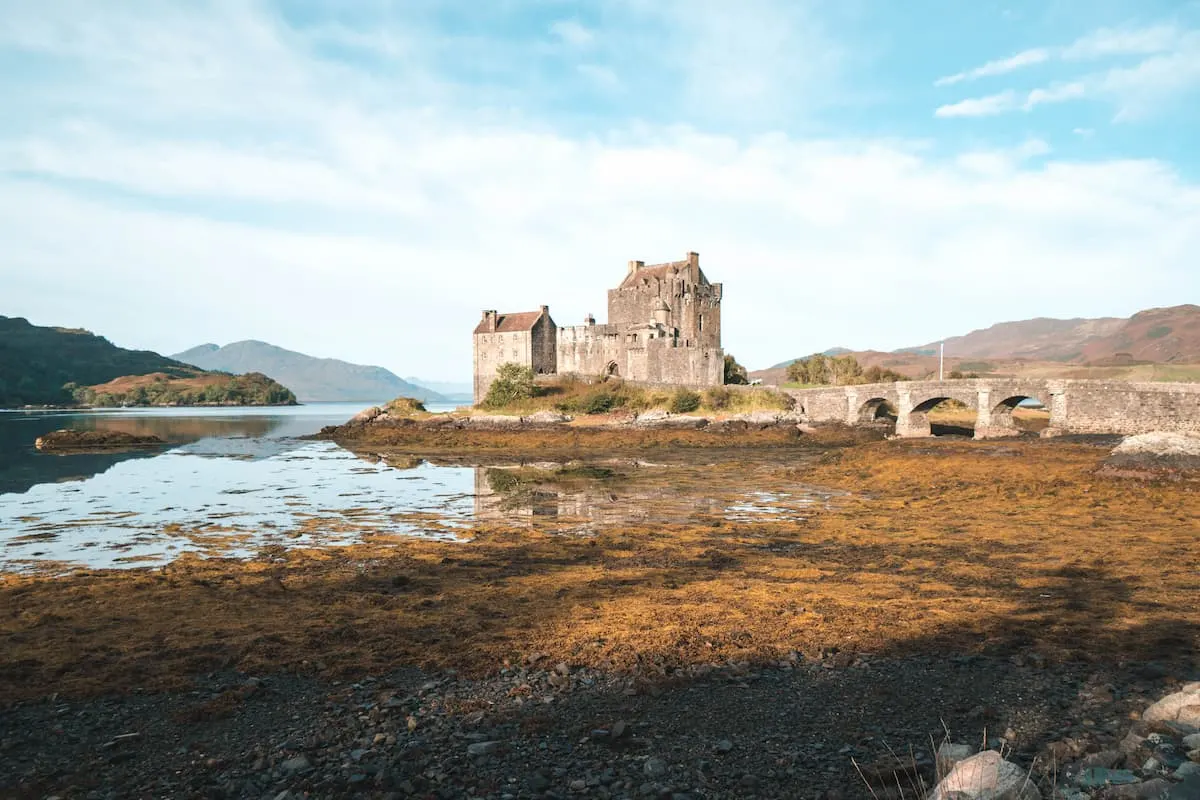
On your way to the Isle of Skype is Eilean Donan Castle. In the early 13th century the castle was built to protect the lands of Kintail against the Vikings. Over the years the castle went through changes but the ultimately culminated in the castle’s destruction was the Jacobite risings of the 17th and 18th centuries.
Then in 1911 Lieutenant Colonel John MacRae-Gilstrap bought the island and decided to restore the castle to it’s former glory which completed in 1932. Now it makes for the perfect stop on your road trip! You can take some amazing photos, learn more about the castle and the role it had in Scottish history and a bathroom break.
The opening times do vary and I recommend checking their website beforehand.
Dun Scaith Castle
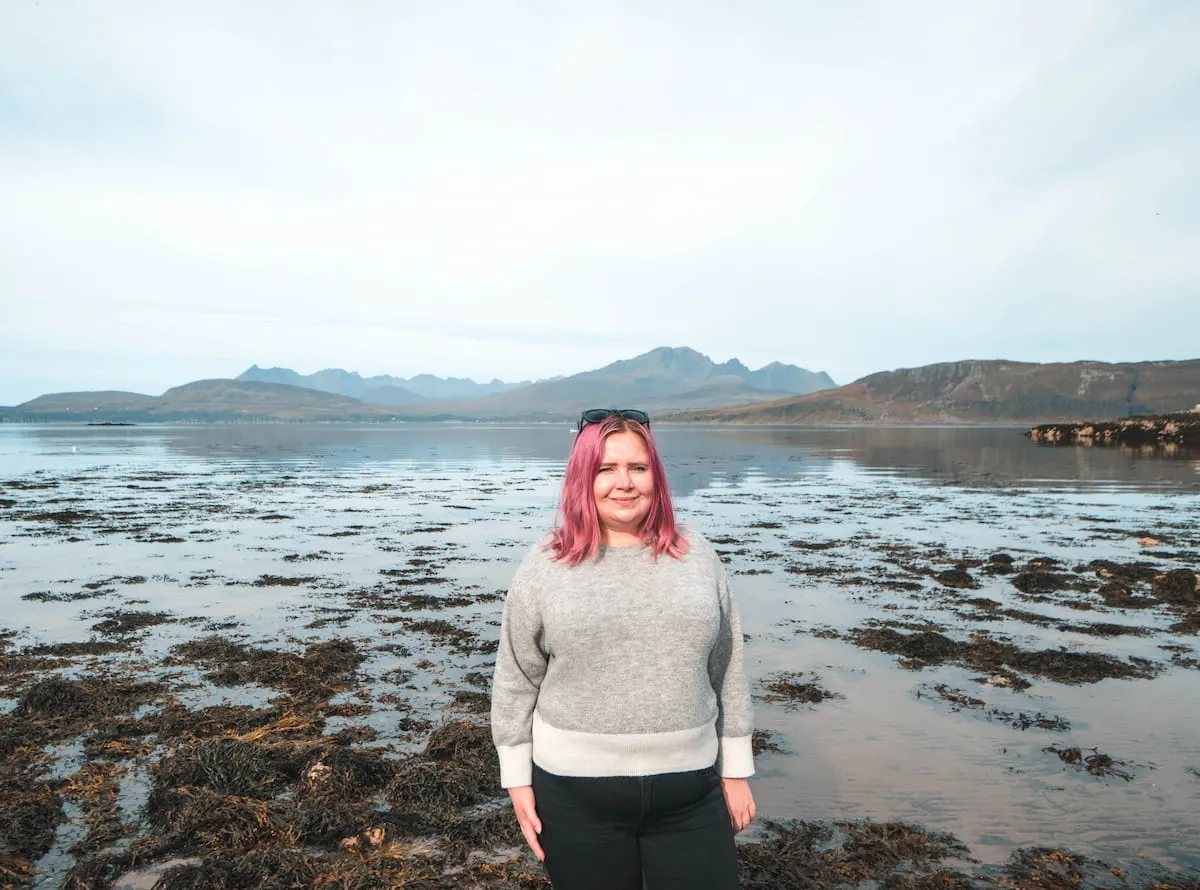
The drive to Dun Scaith Castles was one of my favourite drives on the Isle of Skye. It takes you down roads that aren’t as too full of tourist. On your journey there you will stop by a great beach to take photos and relax a little.
A bit more of a drive down you will find Dunscaith Castle. It is in ruins so don’t expect a grand castle here but there is a great little walk there. Starting point for the walk can be found here.
Fairy Pools
One of the most famous attractions on the island is, of course, the world-renowned Fairy Pools of Skye. These crystal clear blue pools attract visitors from all over, and for good reason too! They make for some excellent photos and in the summer they are even a popular wild swimming destination.
When you arrive there will be a parking lot that gets pretty busy during the high season. It does cost money so you will need to bring some change and they are only just building facilities there. Further up the hill you can find free parking spots and overall depends on how much you like walking back up steep hills.
The walk to the fairy pools was a little challenging for me as I have a fear of stairs, heights and don’t like jumping over things. No idea why! One guy even had to guide me across so I could make it, I just froze trying to get across. I make it sound way worse than it is, it is truly easy for someone that doesn’t have any of these issues.
As you will need to step over wet rocks so I highly recommend grip shoes for the walk as well!
When you arrive at the first waterfalls, you will know that you have arrived at the magical pools and from there you can work your way up the river and explore the other pools. If you are looking for some swimming and jumping opportunities, the first waterfall is the best option for you – but a wetsuit is certainly recommended if you feel the cold!
Talisker Whisky Distillery
If you’ve read my guide on things you can only buy in Scotland then you know that Talisker Skye is one of my recommended drams! It’s well-rounded whisky with some sweet notes coming through.
As it’s a short drive from the Fairy Pools it’s a good pit stop pick up some whisky before heading to the hotel for the evening. If your group opts for the tasting then as the designated driver you can take your tasting home with them. I love this as you can learn all about the whisky but you’re not drinking and driving.
Portree
Of course, no trip to Skye could possibly be complete without a trip to the capital village of Portree, sat on the east side of Skye by a beautiful, quaint bay. The village was originally created for fishing and gets its name from the Gaelic translation for ‘Port on the Slope’.
It’s also the perfect place to base yourself on the Isle of Skye. I stayed at the Portree Hotel, the hotel it’s self was nice enough. What I really loved was the bar/restaurant. The staff there were so welcoming and friendly, the atmosphere really drew me each night we stayed there!
Book your restraurant reseveration in advance! These book out months in advance in some cases. We were really lucky that the hotel we stayed at always had openings for the guest due to this. However if you don’t have this option then reverse way ahead!
Day 4 – Isle of Skye
Today is all about spending a full day on the Isle of Skye on the top loop of the Island.
Neist Point Lighthouse
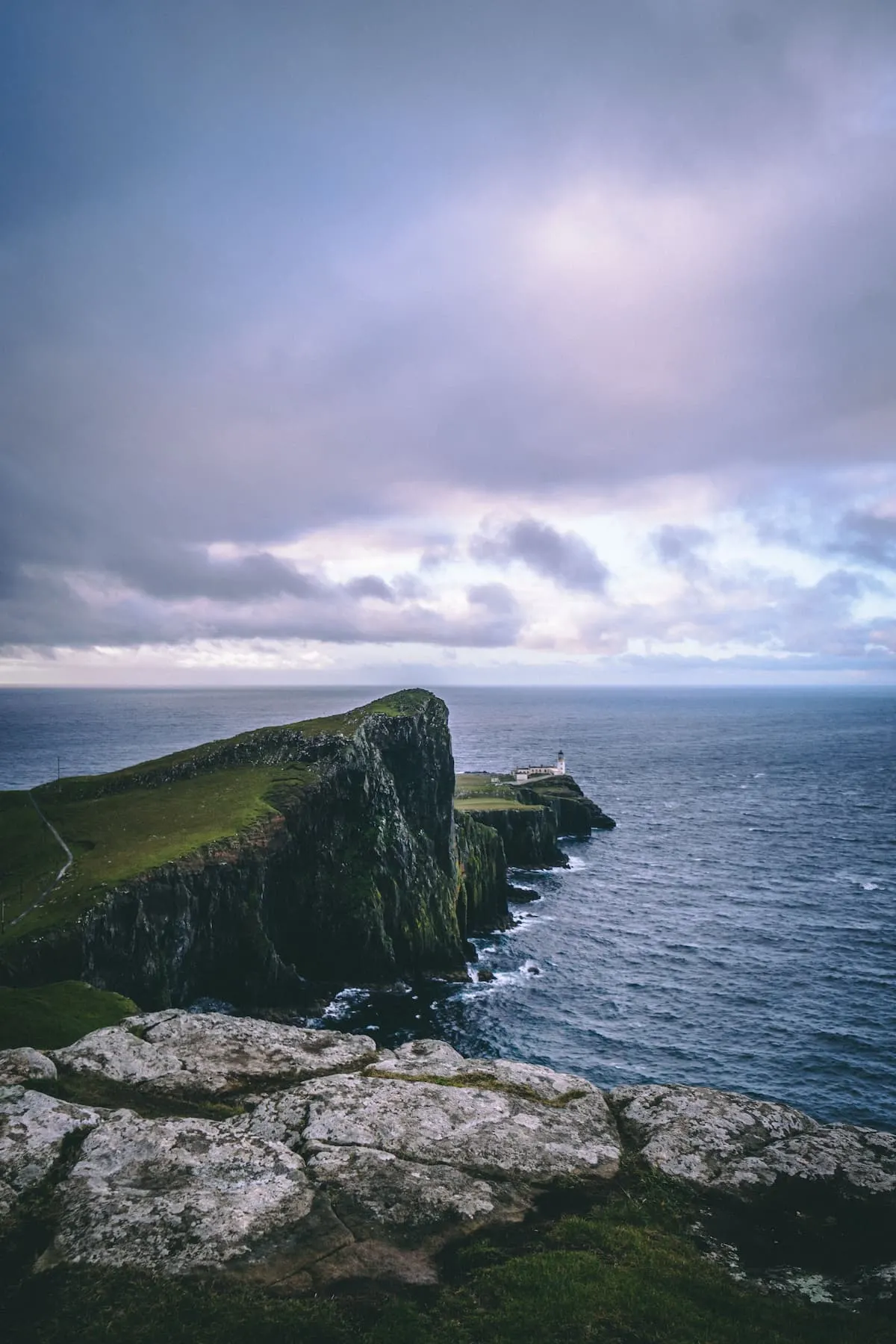
Following the one-way country lanes, you will reach the coastline and end up at Neist Point. It’s the most westerly point of Skye. It was built in 1900 and used to be manned. Now it has an automatic system and no longer requires assistance.
To visit the lighthouse, it’s a 2.2km walk down a steep staircase to get to the lighthouse. When I visited the winds were very strong and it seemed unsafe to walk down there.
At the end of the carpark there is an old shed, if you walk behind that to the right then you will walk across the hill. This will give you a good view of the lighthouse without having to walk down. I opted for this over walking to the lighthouse due to the high winds. Either way be very careful if it’s bad weather.
Quiraing
The Quiraing is a beautiful scenic walk with dramatic cliffs and perfect for photography. The Trotternish ridge was formed by a massive landslip which has created high cliffs, hidden plateaus and pinnacles of rock.
It’s a 4.5 mile (7km) walk which takes about 2 hours with no stops. Due to the cliffs the walk is not suitable for walking in some weather conditions so double check before making the hike.
Old Man Of Storr
The most popular by far has got to be the Old Man of Storr walk, a large pinnacle of rock which can be seen for miles around the island. This famous rock was created by a large landslide which left its distinctive and easily-recognisable shape. The walk in total is under four kilometres and takes the average hiker around one hour and fifteen minutes without breaks, it can be accessed from the main road by Portree.
Day 5 – Skye to Ullapool
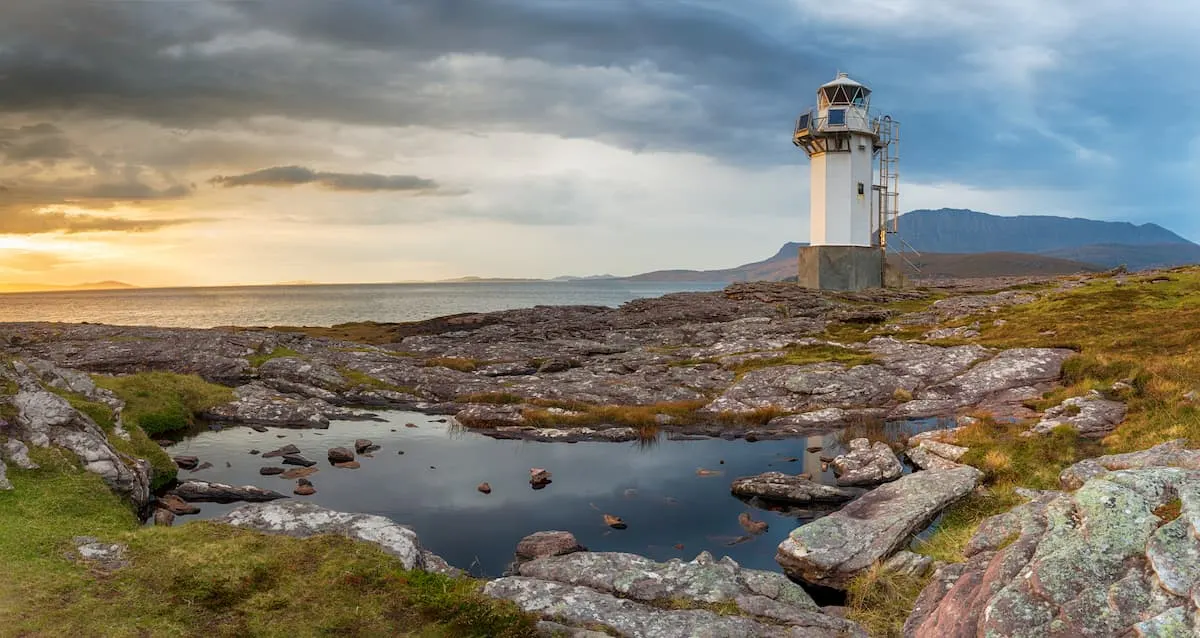
Be warned, many people find it a huge challenge to leave Skye once they have had the opportunity to experience it once, and this may be the way that you feel too! But not to worry, plenty of other equally amazing and enchanting places await you!
The drive to Ullapool is just over three hours with no stops, but once you arrive the driving will all be worthwhile! It is the most northern point of this trip, and therefore the ‘highest land’ that we will be visiting on this particular Highland trip.
It’s a small town in terms of its residents, with only around 1,500 in population, but it has long been popular among tourists, and you will soon see why.
The harbour town feels full and busy due to the vast amount of activities and excellent atmosphere that they create; and, as with the other locations we have explored so far, it is, of course, beautiful as well! In fact, it is one of the most preserved natural towns in the UK, meaning that outdoor activities are plenty.
While this itinerary does not set out the timings or plans to go to the outer Hebridean islands such as Stornoway or Lewis, these islands are easy to reach, they are only a short ferry ride from Ullapool, and therefore can easily be added to any Highland itinerary.
This town is unique in style and has a very different atmosphere to others in the Scottish Highlands, in that it is often compared to the likes of Scandinavia and Canada with its rugged scenery and sunshine that beats down hot in the summer.
One of the best ways to experience this aspect of the Highlands is without a doubt the Summer Isles cruise, allowing you to see the interesting wildlife that the isles have to offer, such as the white-tailed eagles that can often be spotted around the coastline.
This cruise is a great way to do a quick tour around the islands if you do not wish to make them a full part of your itinerary, as you will be able to see their coasts as you sail by. The cruise lasts for roughly two hours and they tend to run throughout the spring and summer each year.
More time on your hands? Consider driving North Coast 500!
Day 6 – Ullapool to Inverness
2 hour drive
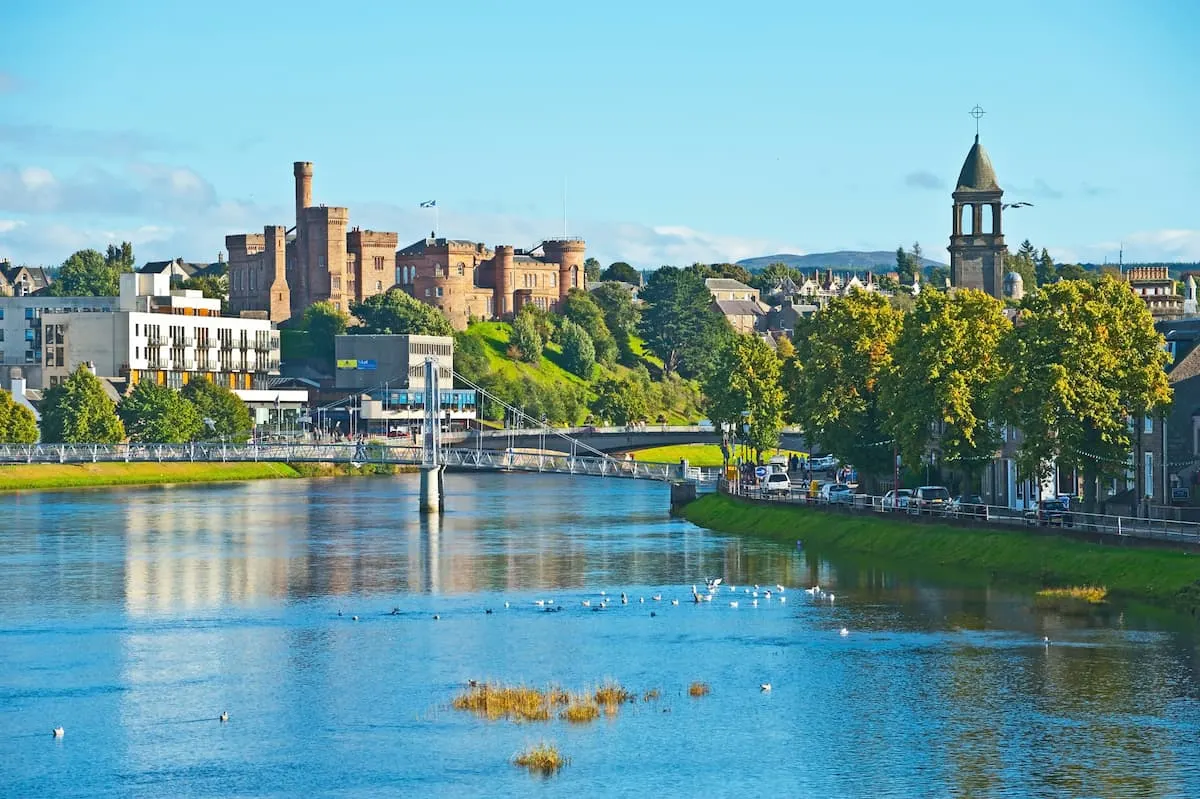
The drive from Ullapool to the national park will take roughly two hours, and takes you through the city of Inverness, which is the largest city in the north of Scotland.
Inverness is a slightly busier place with some nightlife and a huge number of restaurants to choose from. The Castle Tavern is always a popular choice, with real ale, good food and an excellent pub garden for those sunny days.
Situated in Fortrose on the Black Isle, just north of Inverness, the Anderson was once named one of the best places in the world to get a beer and features an impressive collection of Scottish and international tipples. Try local favourites from the Black Isle Brewery or the Cromarty Brewery, both known for their prize-winning beers.
Wander the city centre and explore the Inverness Castle and St Andrew’s Cathedral. On a sunny day in Inverness make sure you take a wander along the sheltered riverside paths around the Ness Islands – a group of islands in the middle of the River Ness which are connected by Victorian suspension bridges.
If you’re visiting with wee ones, hop into a rowing boat on the pond in nearby Whin Park or take a ride on the Ness Island Miniature Railway, open weekends and during the school holidays. It’s a real treasure only a short walk from Inverness city centre.
Day 7 – Inverness to Cairngorms National Park

This famous national park is going to be the final big stop on this Highlands trip and is going to begin taking you further down south, back in the direction in which you came.
Once you do arrive in the Cairngorms, however, it’s time to begin mapping out which of the many activities available that you would like to do. Of course, outdoor activities are why many people choose to visit the national park, and there are plenty of activities no matter when it is that you choose to go. In the summer, choose from hillwalking, kayaking, mountain biking, water sports and so many more; in the winter, why not opt for some of the snowsports that the park has to offer, or visit the UK’s only sled dog centre?
However, activities in the national park span far beyond just outdoor ones, so feel free to explore castles, museums, adventure parks, breweries and outdoor centres as well. Even better; there are scheduled events that are put on throughout the year, such as the annual Husky Rally, or the Whisky Festival; so one could even plan the trip especially around one of these.
This concludes our Highlands itinerary and is intended to give a very brief overview of some of the most beautiful and interesting parts of the Highlands; there is, of course, so much more to be seen and explored!
FAQs
When is the best time to visit the Scottish Highlands?
The majority of people choose to visit the Scottish Highlands between May and September, because that tends to be when Scotland’s weather is best, and when there is the most daylight. The busiest times are certainly July and August, so if you wish to have more space and better vacancies in accommodation then outside of those months works best, however even in the busiest months it is still highly enjoyable and has plenty space for everyone!
Geographically, where is the highlands?
Traditionally, the highlands have been classified by Scots as anything north of the Highland Boundary Fault which crosses the mainland of Scotland in an almost straight line from around Helensburgh to Stonehaven. Nowadays, however, some parts of the counties Nairnshire, Morayshire, Banffshire and Aberdeenshire are excluded from classification as ‘Highland’ due to the fact that they do not share the same geographical and cultural features of the other parts of the highlands.
How long should my trip be?
The itinerary provided here recommends seven days to travel the Highlands rather extensively, but of course, it depends on two things
- How deeply you wish to get to know each place
- How many places you wish to see
That is, the itinerary here is by no means exhaustive, and there are many other places in the Highlands that are worth visiting as well, with enough destinations and things to do that could easily last weeks, but if you want to see a good portion of the area and see everything you would like to, then 7 days is a good starting point.
Can I camp in the Highlands?
Absolutely! In fact, it is actively encouraged that tourists come and camp in Scotland. Upon a simple online search or even a short drive through a given area, it will be easy to find multiple campsites of varying sizes and with varying amenities and costs. Camping is an excellent way to experience parts of the rural Highlands without having to rely on nearby hotels and inns, and it gives you a little more freedom to explore the lesser-known parts of the country.
Another bonus of camping in Scotland is that wild camping is allowed as well, meaning that if you’re looking for something less structured you can pitch up at pretty much any unenclosed location for the night. Be sure to research the wild camping rules before you go, to ensure that you are abiding by the regulations.
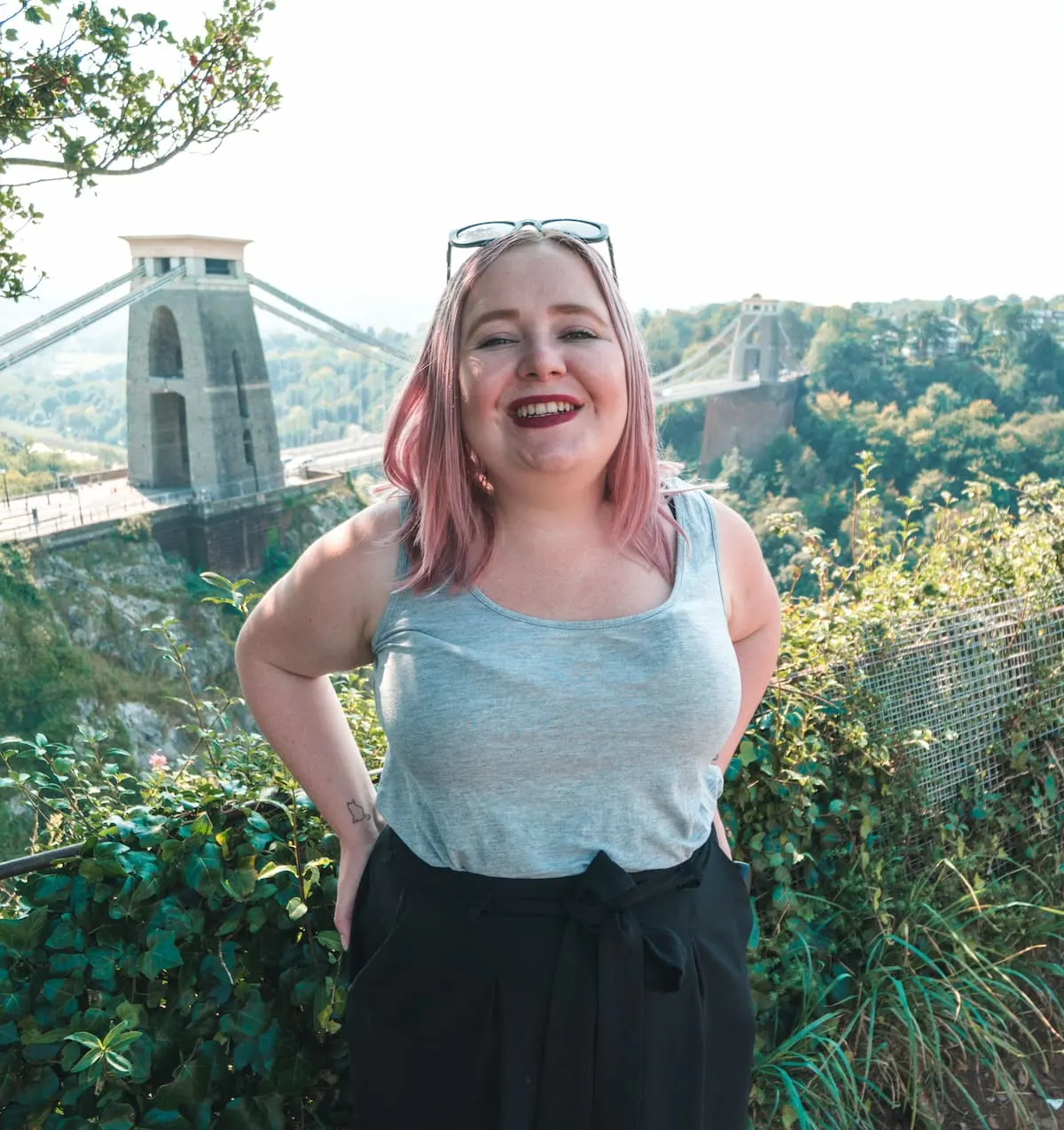
Kat
Hi, I'm Kat, an Australian that moved to London in 2013 to start a new adventure. What a roller-coaster that was! I love helping others move to the UK and people explore the world! I’d be honoured if you’d say, “Thanks!” with a £3 coffee on Ko-fi.

